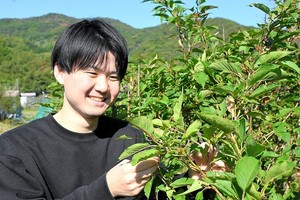THE ASAHI SHIMBUN
July 26, 2022 at 19:08 JST
 Visitors at Naha Airport in Okinawa Prefecture on July 16, the first day of the three-day holiday weekend (Minako Yoshimoto)
Visitors at Naha Airport in Okinawa Prefecture on July 16, the first day of the three-day holiday weekend (Minako Yoshimoto)
Okinawa prefectural officials have declared their COVID-19 battle to have entered a critical phase, forcing them to raise the level indicating the strain on health care services to the "emergency phase" for the first time.
The declaration was in response to the ongoing surge of the virus in the southern island prefecture, as a record high 5,622 new infection cases were confirmed on July 26.
The daily count of new infection cases exceeded 5,000 for the first time in Okinawa on July 20.
Since then, it has continued breaking its own record each day.
Each and every day, the number of hospitalized COVID-19 patients in the prefecture has exceeded 500.
The surge has brought the prefecture’s already overstrained health care service system to an entirely new level.
A Naha man in his 90s on July 18 died while waiting for a hospital bed to become available at a “temporary station.” Such a death was the first for the prefecture, officials revealed on July 26.
In response to the dire situation, officials on July 24 lifted their own level of health care phase to the emergency phase.
The prefectural government is working to increase the number of hospital beds available for COVID-19 patients to 795, up from the current 699.
Twenty-seven health care facilities in the prefecture are opting to limit general medical care and postpone less urgent operations.
The number of new infection cases per 100,000 people nationwide in the immediate week as of July 25 was 872.17.
But the figure for Okinawa Prefecture was staggering 1,933,31.
The occupancy rate of hospital beds as of July 25 in Okinawa Prefecture was 85.3 percent, and the occupancy rate of hospital beds for severe patients was 40.3 percent.
Both are on an upward trajectory.
As of July 26, 1,187 health care workers were unable to report to work because they or their family members contracted the virus.
CRIES FROM KYUSHU
Several prefectures in Kyushu on July 26 braced for a record smashing day as COVID-19 continues to spread.
Kagoshima officials confirmed a record high 3,149 new infection cases.
It was the first time for the prefecture to see the daily count exceed 3,000.
Both Oita and Nagasaki prefectures saw the number of new infection cases passing 2,000 for the first time that day, as Oita logged 2,142 and Nagasaki 2,029.
Oita Children’s Hospital in Oita on July 26 started suspending its general outpatient services from 8 a.m. to 5 p.m. on weekdays due to the spread of the virus.
The hospital said it has increasingly seen child patients of COVID-19.
The wait time to see a doctor on weekends and during an out-of-hours period has been up to five to six hours, the hospital said.
More than 100 patients came to the hospital before 9 a.m. on July 25.
Shuji Kuga, director of the hospital, said of the sharp increase of COVID-19 patients during the three-day holiday weekend starting from July 16, “I thought it was a ‘disaster’ level.”
“During a board meeting, several attendees cried while talking,” Kuga said. “Hospital staff are approaching their limits, both physically and mentally.”
OSAKA ON THE VERGE OF 'EMERGENCY'
The Osaka prefectural government confirmed 25,762 new infection cases on July 26, a record high.
The occupancy rate of hospital beds for COVID-19 patients on the day was 49.6 percent, very close to the “50 percent” criteria for the prefectural government to declare an emergency based on its so-called “Osaka model.”
Tokyo did not see a record high number of cases on July 26, but nonetheless confirmed a staggering 31,593 new infections.
The figure was up 20,575 from the previous Tuesday.
Many other prefectures, including Aichi, Gifu, Akita, Kagawa and Tottori, also set new record highs on July 26.




















A peek through the music industry’s curtain at the producers who harnessed social media to help their idols go global.
A series based on diplomatic documents declassified by Japan’s Foreign Ministry
Here is a collection of first-hand accounts by “hibakusha” atomic bomb survivors.
Cooking experts, chefs and others involved in the field of food introduce their special recipes intertwined with their paths in life.
A series about Japanese-Americans and their memories of World War II